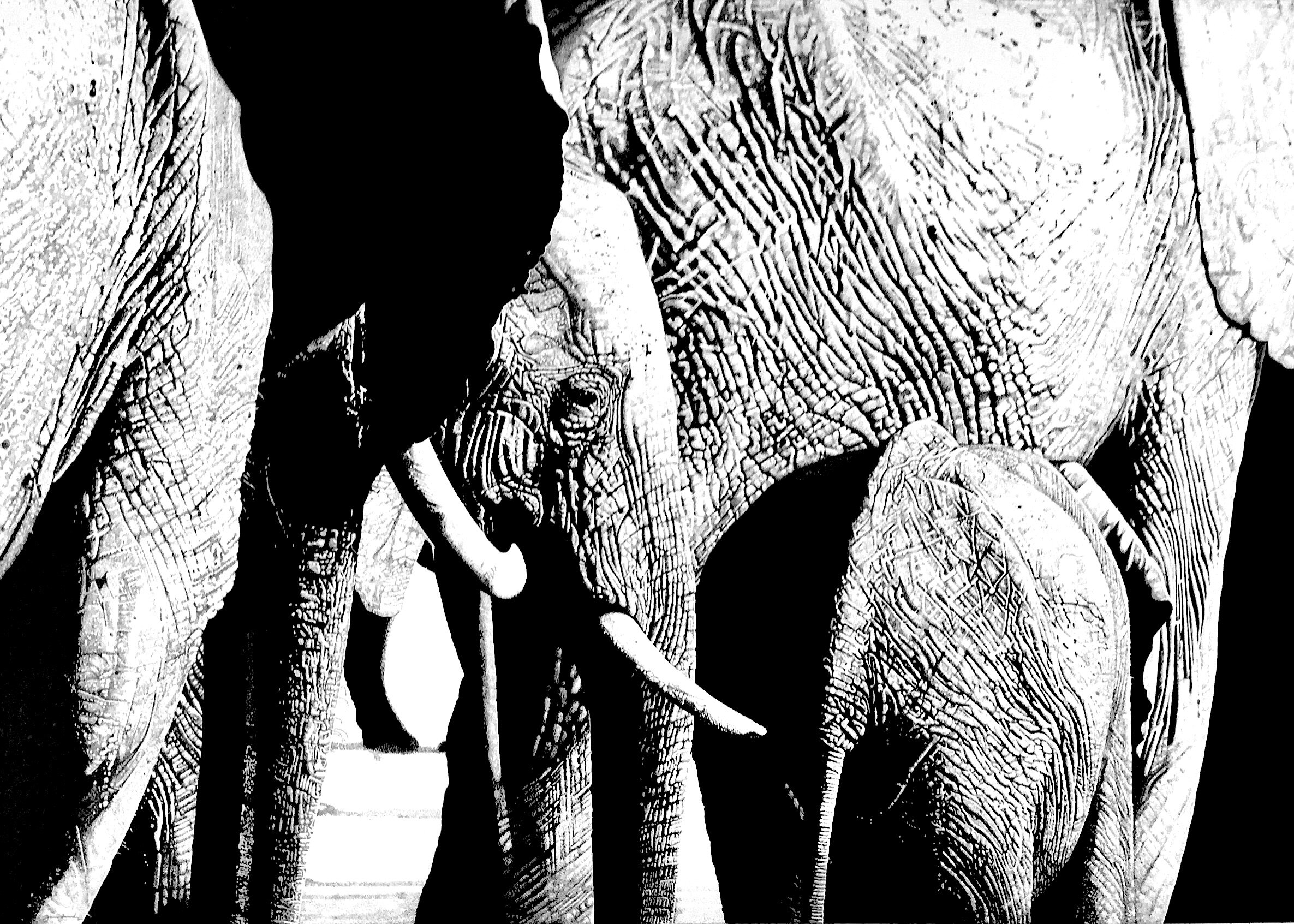Greetings from Bangkok.
I have been drawn to creating massive pieces this year; the three pieces I describe below are some of the largest I have done to date. I recently returned from a trip to Ranthambore National Park in Rajasthan, India to research the Bengal tiger for more large format pieces, which I look forward to sharing soon.
‘Familial wrinkles’ (32.5 x 46.5 inches) - This pen and ink drawing was first conceived at a waterhole in northwestern Zimbabwe in October of 2016. October is the hot dry season in Zimbabwe and the scarcity of water is ever more present at this time of year. In a matter of several hours we watched over a thousand elephant coming in waves to quench their thirst. I wanted to capture the feeling of these families of elephant, the density of bodies, their wet, shiny skin, and contrasting light at this time of day. It is an extraordinary experience to witness these multitudes of animals in one place, but one that is happening because of a massive imbalance in the ecosystem resulting from poor wildlife management in the Zimbabwean national parks. This continuous cycle leads to destruction of natural habit and animal starvation not only for elephant but it has a knock-on effect for all other species in this region. It makes me question what the future holds for our wild spaces and hope we can find a solution to this problem soon.
‘Walking the line’ (33.5 x 48.5 inches) - This pen and ink was inspired by the woodcut, Rhinoceros created by Albrecht Durer in 1515. He had never seen a Rhinoceros but had heard of one in the Port of Lisbon being gifted from the King of Portugal to Pope Leo X. It was the first known Rhinoceros in Europe. It died soon after as the ship carrying it sunk during a storm at sea. I have often thought about how bizarre such a creature must have been as seen for the first time. In the summer of 2016 I happened to take my niece and nephew to a zoo in Erie, Pennsylvania and was confronted by a huge Rhinoceros in the last place one should see a Rhino. I understand the educational benefits of zoos as well as important scientific research conducted there but perhaps it's the naturalist part of me that would rather see an animal die a good death in nature than live in captivity.
The title “Walking the line” encapsulates my contemplation on the precarious place the Rhinoceros is in today. Since before the age of Durer and modern zoos, humans have had the desire to have dominion over the natural world and exhibit exotic animals. Today, due to poaching and human encroachment, Rhinos and other endangered species walk the line between spectacle and wild animal. I created this piece with all of these thoughts being considered as well as thinking how fortunate I have been to grow up in the wild places of Africa with these amazing creatures.
‘Cameliopardilus’ (64 X 38 inches) - The title for this drawing is taken from the scientific naming of the Giraffe derived from ancient Greek, meaning Camel leopard. This is the largest drawing I have done to date. The magnificent line the giraffe cuts in the open African sky has always captivated me. In the conventional imagination the giraffe’s neck is long and straight, but the actual contours of the neck have beautiful curves and twists as it surveys its surrounds, stretching and feeding. It is no wonder then our forefathers were taken by the Cameliopardilus and named a constellation of 32 stars in the northern hemisphere for the shape this group of stars cuts in the night’s sky. For this work I have found inspiration from 17th & 18th century screen paintings of Japanese cranes. I see an uncanny similarity between the neck and head of the giraffe and the profiles of the cranes long curved necks and beaks. The simplicity of composition in this drawing is borrowed from these Japanese masters who believed less is often more.
Best Wishes
Brennan Seward



